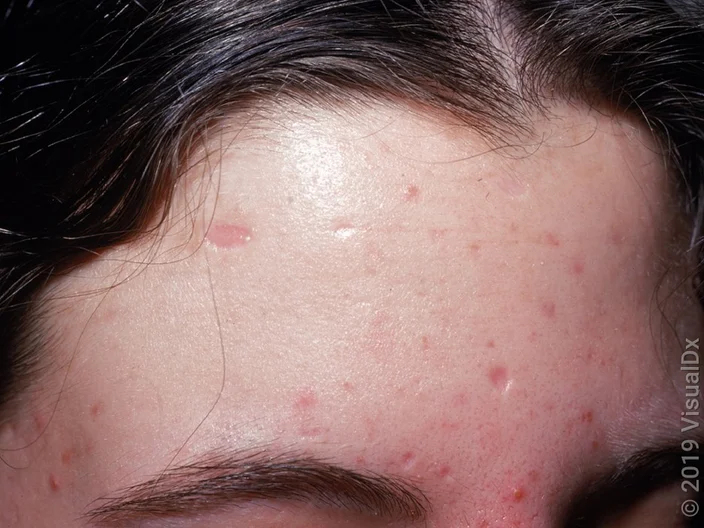Chicken Pox Scarring
Have you been left with stubborn scars from chickenpox? A highly infectious virus causes the infection and affects nearly everyone at least once during their lifetime.
The infection may only last briefly, but the scars left behind can be permanent. It’s crucial to know the cause of the scarring and what treatment can help.
This article is for you if your scars from chickenpox are stubbornly not disappearing despite all your efforts.
Chickenpox scars come in many different types.
Chickenpox, even a single outbreak, can leave scars that last for years on nearly every part of the body. These blisters begin as tiny insect bites or pimples but eventually become fluid-filled. These blisters finally break, leaving an open wound.
You may experience an itching feeling during this period. Scratching blisters can leave severe scars. Chickenpox scars can be of different types.
Atrophic Scars
Atrophic scars have pits and are sunken. The collagen in your skin is destroyed, which prevents the spot from healing properly.
Raised Scar
A few reports suggest chickenpox may trigger keloids[ 1]. These are raised scars that appear where the skin has been injured. Keloids can sometimes grow more significant than the original injury.
Round Marks
Most round marks are minor scars that can be quickly resolved. These are usually red or brown.
How long do chicken pox scars last?
Chickenpox usually does not leave a permanent scar. It takes between 6 and 12 months after the infection for the spots fades entirely. The scars may last longer if your chickenpox is more severe and infected than usual.
How to remove chickenpox scars?
You can remove scars from chickenpox using over-the-counter treatments. Natural remedies are also available.
Over the Counter Treatment
Retinol creams
Scar removers are frequently used because they contain vitamin A. Vitamin A boosts the production of collagen in the skin. According to studies[ 2], retinol is great for removing acne marks. Apply a retinol lotion to your acne scars before bedtime every day. If your skin is irritated by the cream, apply it every alternate day.
Scar Removal Creams
There are many scar removal creams available. They contain different ingredients to reduce the pigmentation. Scar removal creams are available in many different brands.
3Exfoliants
It can also be used to remove scars from chickenpox. This will allow for the regeneration of new skin by removing damaged skin cells. You can exfoliate your pigmented scars using either chemical or mechanical exfoliants. Scrubs and skin brushes are mechanical exfoliants. You should use these directly on spots each day. Some over-the counter lotions exfoliate the skin with . These products create a small chemical reaction on the scar.
Professional Treatments
Scar excision
The scar is surgically removed. This may be the best option if nothing else helps your scars. The doctor will put you under anaesthesia, and then use a scalpel in order to remove the scar tissue. This is for deep, pitted scars.
Microdermabrasion
It is also an effective treatment. A rotating brush is used here to remove the damaged skin. Another option is Dermabrasion, which penetrates deep into scar tissue.
Tissue fillers
If you have scars that are sunken, these can be chosen. You can get your skin back to its original shape. Fillers such as , hyaluronic Acidand Fats are injected in your scar to fade its appearance. This is only a temporary fix that will last for about six months.
Micro-needling
The tool is shaped like a rolling pin and has several tiny needles. The tool is rolled over the scar using measured pressure after you have been anaesthetized. It increases collagen formation, and produces smoother skin. There may be a small amount of bleeding.
Skin grafting
It is only recommended for severe scars. This involves transplanting skin from another area of the body to the scar.
Chemical peels
They help regenerate skin by causing chemical reactions to your scar. The uppermost layer of skin is removed, allowing for the regeneration of new and fresh outer layers. Doctors only perform this procedure, as anaesthesia may be required.
Laser Therapy
It is common to use this treatment on chickenpox marks. This treatment can help improve deep, sunken scars. Treatments can take between 15 minutes and 2 hours.
Natural Treatments
Aloe vera:
Aloe vera’s soothing properties and antioxidants can be helpful. Aloe vera is great for scars, as it fades them out over time.
Vitamin E
Many people prefer this remedy to treat scars from chickenpox. This remedy may only work for some. According to studies[ 4], vitamin E may not be as effective as claimed.
Cocoa butter
This natural fat is rich in antioxidants and will provide you with the ultimate moisturizing. Despite the popular belief that Cocoa Butter works on scars, studies [ 5] conclude otherwise.
Rosehip oil
These oils have a therapeutic value, according to research. Rosehip oil has antioxidant properties and phytochemicals that are beneficial for scar removal.
How to Prevent Chickenpox Scars
You can protect yourself from ugly scars by taking a few simple preventive steps. Here are some of them:
Avoid scratching your skin with nails.
Neem leaves can be used to soothe blisters and reduce itching.
Use soothing creams or lotions on the blisters. Aloe vera can be used.
Use an anti-itching lotion on the blisters.
A soothing oatmeal bath is a great way to relax.
You can also try neem as a bath soak or by consuming it.
Use antihistamine medication.
Wrapping up
Scars can be a nuisance, but they do not make you any less beautiful. It may seem difficult to remove these scars, but this is not the case. All your efforts to protect your skin will eventually pay off. For minor scarring, try over-the-counter options and natural remedies. If you have major scars, a dermatologist can provide professional treatment.
